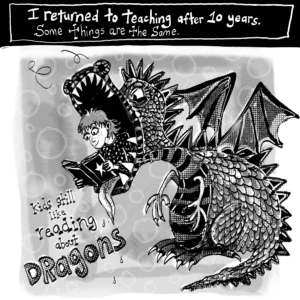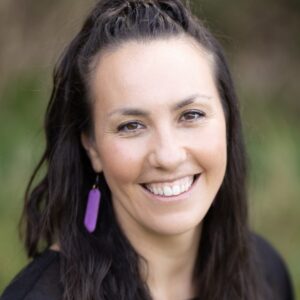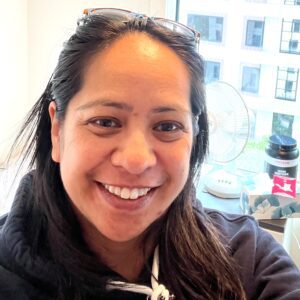



O le Gagana, o le Fatu po‘o le Mauli lea o le Aganu‘u a Samoa a‘o le Aganu‘u, o le Fa‘asinomaga lea o le Samoa. – Tuiatua Tupua Tamasese Efi, 2018
O a ia Taumafa? O Taumafa Manogi, ua fa‘atusaina lea i le fa‘aaogaina o le Gagana e fafaga ai tama a Samoa e Faatonu, Fa‘asino, Faapoto ma Fesoota‘i ai. E leitioa fo‘i le Fa‘autaga ma le ‘au fai Tofā a fa‘apea mai: “O fānau a tagata e fafaga i ‘upu ma tala ‘ae ‘o tama a manu o fuga o lā‘au.”
O la‘u gagana,o le taula lea o lo‘u olaga aoaoina, o le faavae malosi ma le mafuaaga o le manuia o lo‘u taumafai i totonu o Niusila. O se pine faamau foi o suesuega o loo faapea mai, a malamalama le tagata i lana gagana muamua, e faigofie ona fa‘aofi se isi gagana i lona olaga1. Na ou galue o se faiaoga i Samoa ma sa fa‘aaogaina le Gagana Samoa o le Gagana fa‘atonu i aoga. I le galue ai i Niusila nei, na faigofie ona feso‘ota‘i, tusitusi ma talanoa i le Gagana Peretania ona o le lelei o la‘u fa‘asamoa. E faapea foi le maitau i fanau o loo autova‘a mai i Samoa, e faigofie ona au ai i mataupu e faatalanoaina i le gagana Peretania ona o lo‘o mausali ma lelei le tautala fa‘asamoa.
O le fesili: “Ae o le a se matauga i fanau e le lelei le tautala fa‘asamoa?” I le mafutaga ma la‘u vasega (bilingual class) e vave tele le pu‘eina o le gagana Samoa e tamaiti na ola i Niusila ona o a latou paaga mai Samoa. E fa‘apena foi le vaega mai Samoa i le pu‘eina o le gagana fa‘aperetania mai a latou paaga o lo‘o avea le gagana peretania ma gagana muamua. O lo‘u taofi, a fiafia le loto o le tamaititi, o le auga lea o le naunau e saili ma tu‘ufesili mo le fafagaina o le ola a‘oa‘oina. O le Matafaioi ma le tofi lea e fai fa‘atasi e faiaoga, matua ma aiga fa‘atasi ai ma fanau.
O le faaaogaina o le gagana Samoa, o se vailaau ua lototele ai le tamaititi e fa‘asoa. Ua tautala ma manino ona manatu pe a tulai i faatasiga o tu ma aganuu a aoga. Ua faamautuina ai lana tu faaaloalo ma ‘ausia nisi o moemitiga,ina ia mafai ona tautala, faitau ma tusitusi i gagana e lua. O se tasi vaega taua, o le gagana Samoa lava, sa foia ai faafitauli na tulai mai i fanau sa i vasega ē na o le gagana Peretania e faaaogaina. Ina ua fesiligia le mafuaaga o le lē faalogo ma ulavavale, ae sa faailoa e le tamititi, o le lē malamalama i le gagana Peretania ma e leai foi se isi sa faaliliuina i lana gagana.
O loo faatupulaia le toatele o tamaiti i le Iunite Samoa ma o loo maitauina le alualu i luma o lo latou taumafai. O se fiafiaga sili foi i matua, ona ua faaaoga la latou lava gagana e faasoa ai ma faiaoga i auala eseese e mafai ona latou fesoasaoani ai i fanau i le fale, aua o Taumafa ia e manogi ma aoga mo fanau. Saunoa le tamaitai fomai o Fanaafi Aiono-Le Tagaloa: “A leai se Gagana, ua leai se Aganuu. A leai se Aganuu, ua po le Nuu”.
Language is the heart (fatu) or centre (mauli) of the Samoan culture, and culture signifies one’s sense of belonging. – Tuiatua Tupua Tamasese Efi, 2018
Language can be considered nourishment – the best ingredient for feeding and enriching knowledge for the purposes of learning, directing, relating and connecting. There is a Samoan proverb that states, “O le tama a le Tagata e Fafaga i Upu ma Tala ae o Manu o Fuga o Laau” – “The son of man is nourished with words, while birds are nourished with nectar.”
My Samoan language is the anchor and strong foundation of my journey academically. It helped me understand and communicate more clearly in English, both oral and written. I see it as one of the main reasons I am good at my job as a teacher, living a fulfilled life in this country. I was fortunate to have experienced life in Samoa not only as a student, but also as a teacher. Samoan language was the language of instruction in the school system and no doubt kept my fa‘asamoa current and sharp.
This is also observed in our bilingual unit with Samoan children who have not been in New Zealand that long. While their first language is Samoan, they adjust reasonably well to picking up the meaning of conversations in English. With guidance and support from teachers and their peers, their participation and contributions to class activities and discussions are impressive. It legitimises the maintenance of children’s first languages in order to find their own uniqueness.
And what about Samoan children who have English as their first language?In my experience, as one of the teachers for the bilingual class, it is interesting to note that both Samoan first language speakers and English first language speakers have a very high degree of similarity. I have observed with great admiration the support that both groups of children give to one another. They look happy while learning and exploring.
While the emphasis in the unit is on language, the environment and the people in it must create conducive settings for children to enjoy learning. This is the reason children enjoy coming to school and are free to explore, question and learn more words. It is a source of improving the articulation of language and enriching knowledge. It is our collective responsibilities as teachers, parents and aiga to nurture our children towards contentment.
Language embodies values and meanings to living life. It archives beliefs, history and genealogy (gafa and fai‘a) that define us as a people. Cummins suggests that when someone understands their first language, they are more likely to learn and understand other languages easier and steadier2. This could lead to forging better relationships and a unified community.
In summary, the use of children’s first language helps them understand other languages quicker. It provides them with confidence to participate and be expressive. It increases their sense of pride in who they are and their ability to communicate and connect with others. Samoan speakers learn English quicker with the help of their peers, and likewise. They are able to resolve their differences with the help of the teacher using their first language. Roscommon School’s bilingual unit is growing all the time and, I must say, it looks very healthy.
Ia manuia.
Pisa Fua works at Roscommon School in Manurewa as a classroom teacher and team leader of the Samoan Bilingual Unit.
1. Cummins J. (2000). Language, power and pedagogy: Bilingual children in the crossfire. Clevedon, UK: Multilingual Matters
2. Ibid.
Related Posts

After a decade away from the whiteboard, educator and comic artist Indira Neville has returned to teaching – and she’s drawing about it. In this comic series, Indira shares a glimpse into her days at school, capturing what’s changed, what’s stayed the same and what she never saw coming.

It’s often said that a nation’s budget reflects its values. If that’s true, then Budget 2025 tells us undeniably that children, especially our youngest tamariki, are not a priority.

My journey and personal relationship with my identity is an ever-evolving part of my life. My identity bears the impacts of Te Tiriti o Waitangi and the Treaty from before I was even born.

Deputy principal Tania Yorke recently completed her Master of Educational Leadership. She shares what she learnt about developing as a leader and why the Teaching Council’s Educational Leadership Capability Framework is a goldmine of a tool.